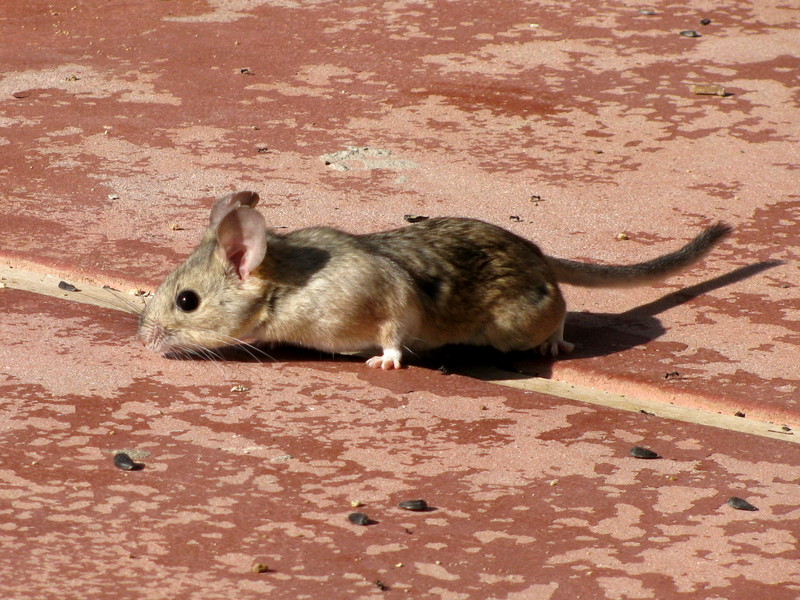|
desert woodrat (Neotoma lepida)
| 제목: | desert woodrat (Neotoma lepida)
| | 올린이: | Wiki Photos (---@---.---)
| |

| 해상도: 2332x1749
파일크기: 1159882 Bytes
촬영일: 2015:04:11 08:52:23
사진기: Canon PowerShot SX110 IS (Canon)
F number: f/4.0
Exposure: 1/800 sec
Focal Length: 34900/1000
등록시간: 2017:04:10 12:09:03
|
Desert Packrat (Neotoma lepida) eating sunflower seeds in Joshua Tree, California, USA, April 2015. Photo by Jules Jardinier
Date 11 April 2015, 08:52:23
Author Jules Jardinier
Source: https://commons.wikimedia.org/wiki/File:Desert_Packrat_(Neotoma_lepida)_eating_sunflower_seeds.JPG
The desert woodrat (Neotoma lepida) is a species of pack rat native to desert regions of western North America. Desert woodrats range from southeastern Oregon and southwestern Idaho, south through Nevada and western Utah to California in the US, and Baja California and extreme northwestern Sonora in Mexico.
|
댓글 |
|---|
| | 손님 |
|
Scientific Name: Neotoma lepida Thomas, 1893
Common Names: Desert Woodrat, Desert Packrat
Synonyms:
Neotoma bella Bangs, 1899
Neotoma desertorum Merriam, 1894
Neotoma lepida abbreviata Goldman, 1909
Neotoma lepida arenacea J. A. Allen, 1898
Neotoma lepida aridicola Huey, 1957
Neotoma lepida californica Price, 1894
Neotoma lepida egressa Orr, 1934
Neotoma lepida felipensis Elliot, 1903
Neotoma lepida gilva Rhoads, 1894
Neotoma lepida grinnelli Hall, 1942
Neotoma lepida insularis Townsend, 1912
Neotoma lepida intermedia Rhoads, 1894
Neotoma lepida latirostra Burt, 1932
Neotoma lepida marcosensis Burt, 1932
Neotoma lepida marshalli Goldman, 1939
Neotoma lepida molagrandis Huey, 1945
Neotoma lepida monstrabilis Goldman, 1932
Neotoma lepida nevadensis Taylor, 1910
Neotoma lepida notia Nelson & Goldman, 1931
Neotoma lepida nudicauda Goldman, 1905
Neotoma lepida perpallida Goldman, 1909
Neotoma lepida petricola von Bloeker, 1938
Neotoma lepida pretiosa Goldman, 1909
Neotoma lepida ravida Nelson & Goldman, 1931
Neotoma lepida sanrafaeli Kelson, 1950
Neotoma lepida vicina Goldman, 1909
Neotoma desertorum sola Merriam, 1894 |
^o^
동물그림창고 똑똑전화 누리집
^o^
|
|
|

